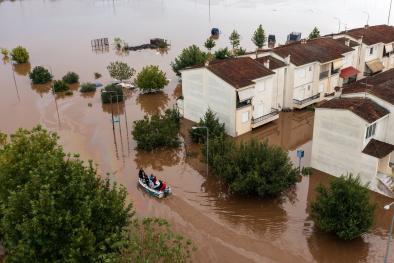Science Source
Twentieth-century hydroclimate changes consistent with human influence
- States that the detection of human influence on global drought has been complicated by large internal variability and the brevity of observational records
- Addresses these challenges using reconstructions of the Palmer drought severity index obtained with data from tree rings that span the past millennium
- Shows that three distinct periods are identifiable in climate models, observations and reconstructions during the twentieth century
- Finds that in recent decades (1981 to present), the signal of greenhouse gas forcing is present but not yet detectable at high confidence
- Finds that observations and reconstructions differ significantly from an expected pattern of greenhouse gas forcing around mid-century (1950–1975), coinciding with a global increase in aerosol forcing
- Finds that in the first half of the century (1900–1949), however, a signal of greenhouse-gas-forced change is robustly detectable
- Multiple observational datasets and reconstructions using data from tree rings confirm that human activities were probably affecting the worldwide risk of droughts as early as the beginning of the twentieth century
Related Content
Science Source
| American Meteorological Society
Getting ahead of Flash Drought: From Early Warning to Early Action
Jason A. Otkin, Molly Woloszyn, Hailan Wang et al
Science Source
| American Meteorological Society
Flash Droughts: A Review and Assessment of the Challenges Imposed by Rapid-Onset Droughts in the United States
Jason A. Otkin, Mark Svoboda, Eric D. Hunt et al
Science Source
| Nature Climate Change
Rapid intensification of the emerging southwestern North American megadrought in 2020–2021
A. Park Williams, Benjamin I. Cook & Jason E. Smerdon
Headline

Oct 26, 2023 | Climate Nexus Hot News
The Planet is ‘Under Siege,’ Scientists Say


